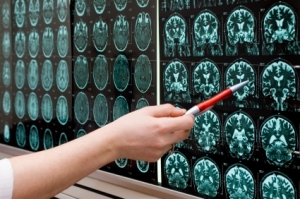It is common knowledge that strength training does not just give you bigger, stronger muscles. The neural adaptations that take place in response to resistance training are known to make up a large component of the improvements in strength that occur, especially in the early phase, the first few weeks of training.
Another interesting phenomenon within strength training is something called “cross-education”. Cross-education is when you train one limb and the other, untrained limb, on the other side of your body also gets stronger or able to perform a task more effectively! A few years ago our colleagues at NTNU published a study that showed that their strength training protocol gave about a 40% improvement in strength in the trained leg of young healthy volunteers but also about a 30% improvement in strength in the untrained leg. They also showed, using electrical stimulation and recording from the leg muscle, that both the trained and untrained leg received more nerve impulses after the training period. They were curious whether there were changes occurring in the brain and that’s how we got involved.
 My research is focused on how physical activity affects the brain. We conducted a thorough brain imaging study to see whether this type of strength training produced any changes in the brain that could contribute to either the main training response or this cross education effect, or perhaps both. The article was just published in the Journal of Applied Physiology. However, I have to stress that these results should only be considered as preliminary findings which need to be replicated.
My research is focused on how physical activity affects the brain. We conducted a thorough brain imaging study to see whether this type of strength training produced any changes in the brain that could contribute to either the main training response or this cross education effect, or perhaps both. The article was just published in the Journal of Applied Physiology. However, I have to stress that these results should only be considered as preliminary findings which need to be replicated.
We looked at brain structure, both white and grey matter and also brain activation in the primary motor cortex, the main part of the brain controlling movement. This is where the study starts to get complicated, because, as you may know, the left side of your brain controls movement on the right side of your body. In the past, researchers have observed structural changes in the brain’s grey and white matter when people have learnt a complicated task such as juggling and they’ve observed differences in brain structure in ballet dancers compared to non ballet dancers or piano players compared to non piano players. These earlier findings all involve complicated motor tasks. We studied just one simple, strong muscle contraction performed repeatedly in 16 training sessions, each session lasting about 15 minutes over a four week period. We found that nerve fibres in the corticospinal tract sending impulses to the trained leg got about 2% more coherent – you could say that these brain fibres were “stronger” after training. We also observed changes in the putamen, a round structure at the base of the forebrain that is known to be involved with regulating movement and learning.
 The changes we observed are interesting as they provide further evidence that the human adult brain is extremely plastic, that is, even very simple tasks when performed well and repeatedly, even over a short timeframe can cause changes in the brain. We think that these results and the cross education concept in general might be an interesting avenue to explore for patients who wish to restore function after an injury to one side of the body or brain.
The changes we observed are interesting as they provide further evidence that the human adult brain is extremely plastic, that is, even very simple tasks when performed well and repeatedly, even over a short timeframe can cause changes in the brain. We think that these results and the cross education concept in general might be an interesting avenue to explore for patients who wish to restore function after an injury to one side of the body or brain.
Helen Palmer, researcher at CERG.

